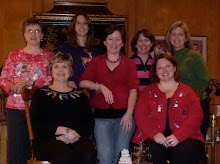 In yesterday's post I wrote about some adventures in Revisionland, where I floundered for some time while trying to get my main character to express himself.
In yesterday's post I wrote about some adventures in Revisionland, where I floundered for some time while trying to get my main character to express himself.After revising based on some helpful feedback from other agents and then signing with Joanna, I still had more work to do.
For many of the revisions, I added some internal thought to help readers connect with the character more. Many scenes and chapters had ended too soon, without saying enough about what was going on in the character's head. Again, especially because it's told in the first person POV, the reader should be in the character's head with him, not wondering what he's thinking.
Today I'm posting some "before" and "after" examples from the manuscript, along with Jo's comments.
Before: I try my best to look brave.
Jo: But inside he feels...?
Me: Um...not brave?
Revision: I try my best to look brave, but I worry I'll never feel safe again.
This is from a scene where Hastin surprises his mom with a visit after not seeing her for a couple of weeks, and he notices her smile seems forced:
Before: I run toward her, then stop. Doesn't she want to see me?
Jo: How does that make him feel? Tie it to his elation, then being deflated in some way.
Revision: I run toward her, then stop. Doesn't she want to see me? All this time, I thought she must be missing me as much as I've missed her, but not it feels like I've done something wrong.
Here, a character is giving instructions about trapping an elephant:
Before: "Come here each evening to see if we've caught anything," he told me as we stood at the trap's edge. "...After a day or two, we will have our elephant."
And the chapter ended there, so Jo asked me to elaborate on how he feels about this. In the revision I tied this back to Hastin's family, specifically his sister having to leave home for medical care after a bite from a disease-carrying mosquito.
Revised to add: And that elephant will not have its family anymore, because of us. My stomach sinks. I'm no better than the mosquito who bit my sister.
A later chapter circled back to that idea, when Hastin is making a promise to the elephant they've just trapped:
Before: "I won't leave here without you, I promise."
Jo: End the chapter with his final thoughts to keep us connected to how he's feeling.
Revision: "I won't leave here without you, I promise." And I mean it too, but I don't feel any better. I feel like a mosquito promising to take back its bite.
At times I used Hastin's actions to show how he was feeling. I hadn't shown enough about him feeling afraid when he was alone in the forest. He's an eleven-year-old from the desert, so of course he's not comfortable wandering around the forest by himself. He may not come right out and say "I'm afraid," but I try to show that fear by the way he freezes when he hears an unfamiliar noise, jumps away from a spider, or checks a tree branch for snakes and bugs before climbing it. (That also helped with another revision task, firming up the setting.)
In Part 1 of the post, we had some great comments about authors who have ninja-like skills at showing a character's feelings. When it's done well, you finish a book feeling like you've been on a roller coaster ride with the character. It's by no means an exhaustive list, but here are a few to start with if you need some good examples. Suggestions from yesterday's comments were Mary E. Pearson, Sarah Dessen, and Megan McCafferty; other authors I thought of were Sara Zarr and Jo Knowles. (I dare you to read Jumping Off Swings without crying!)














